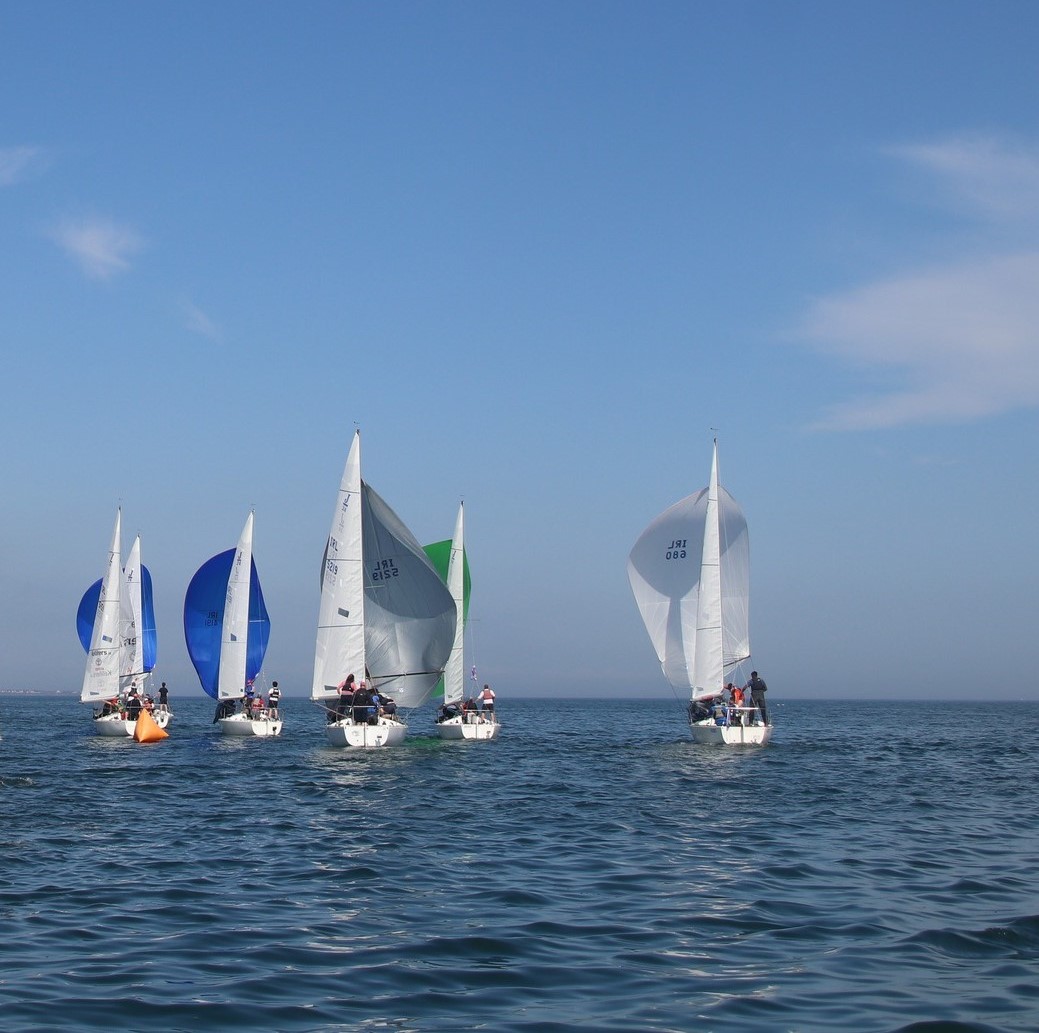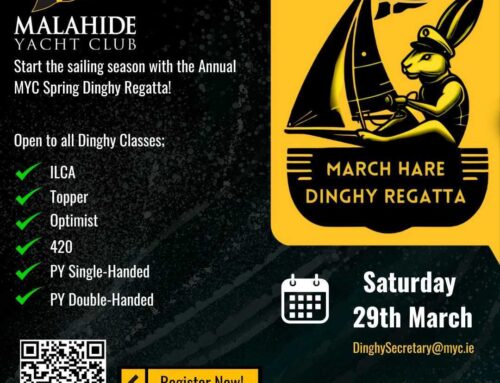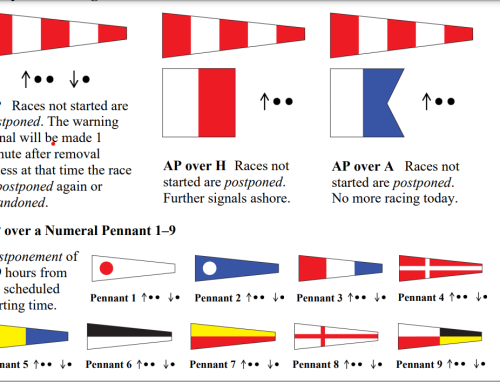Part 4: Downwind Sailing
David Greene continues his series on owning and racing a racing cruiser:
Many sailors regard downwind sailing as the time to get the sandwiches and drinks out, and have a chat about who was on the Late Late Show (usually no-one good) or whether Munster are back on track again, (usually not). But with a bit of concentration, the downwind legs can be quite profitable.
The starting point is the approach to the weather mark. We always try to ensure that we approach the top mark on starboard and with plenty of time for the foredeck crew to have the pole hoisted, with sheets and guys attached. That means we can literally hoist as we round the mark and get the kite filling as quickly as possible. Then we need to check if the course to the next mark is biased i.e. is one leg more favoured than the other. Remember when we talked about sailing the longest tack first on the beat? It’s the same offwind.
My preference is always to sail the most direct course to the next mark. But in light winds, we might have to sail a bit closer to the wind to keep our speed up. A good tip is to sail closer to the wind until the spinnaker trimmer feels some tension on the sheet. When there is little or no sheet tension, the trimmer should be asking the helmsman to come up, and when tension comes on the sheet, the trimmer should ask the helmsman to come lower. In normal conditions, you can bear off in gusts, and come up in the lulls, thus keeping a good balance between distance sailed and speed. And remember, in light winds, get the crew as far forward as possible and get the stern out of the water. If you’re not flying a kite, move your genoa sheeting angle forward and outboard. When we sail in the “Non-Spinnaker” class in Howth, we bring our spinnaker blocks from the stern of the boat forward to the toe-rail and level with the side stays. Then we bring the genoa sheet through these blocks – it works a treat.
Some quick things on flying a spinnaker. If it’s windy, run the sheet through a tweaker – it will help stop the kite from rolling from side to side. If the kite does start rolling, always follow the roll. So it the kite is rolling to the left, steer to the left and if it rolls to the right, steer right. If you start to broach, don’t jam the helm right over trying to fight the broach. Generally this just stalls the water flow over the rudder and makes the broach inevitable. If you do broach, centralise the helm and get the water flowing across the rudder again.
Finally – practice, practice, practice. Being able to gybe quickly and successfully, or being able to drop the kite very close to the mark is a direct result of how many times you practise those manoeuvres. And it’ll pay off on the race course.
Editor’s Note: This series is written by David Greene, an experienced skipper from Malahide, Ireland. David has decades of sailing and racing experience, often participating in local yacht club races and regattas around Ireland with his boat, White Pearl (Elan 331). Malahide estuary is located on the east coast of Ireland, characterized by strong tides and a sandbar that restricts the draught of boats.






